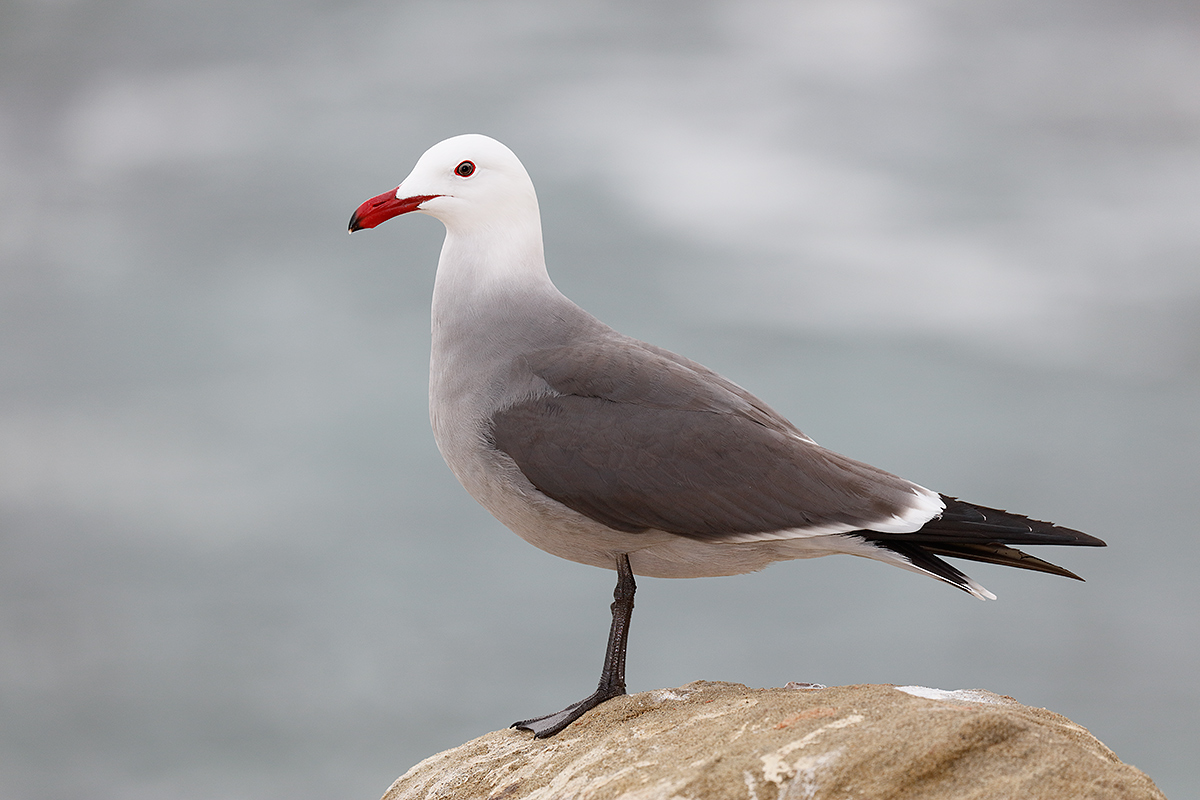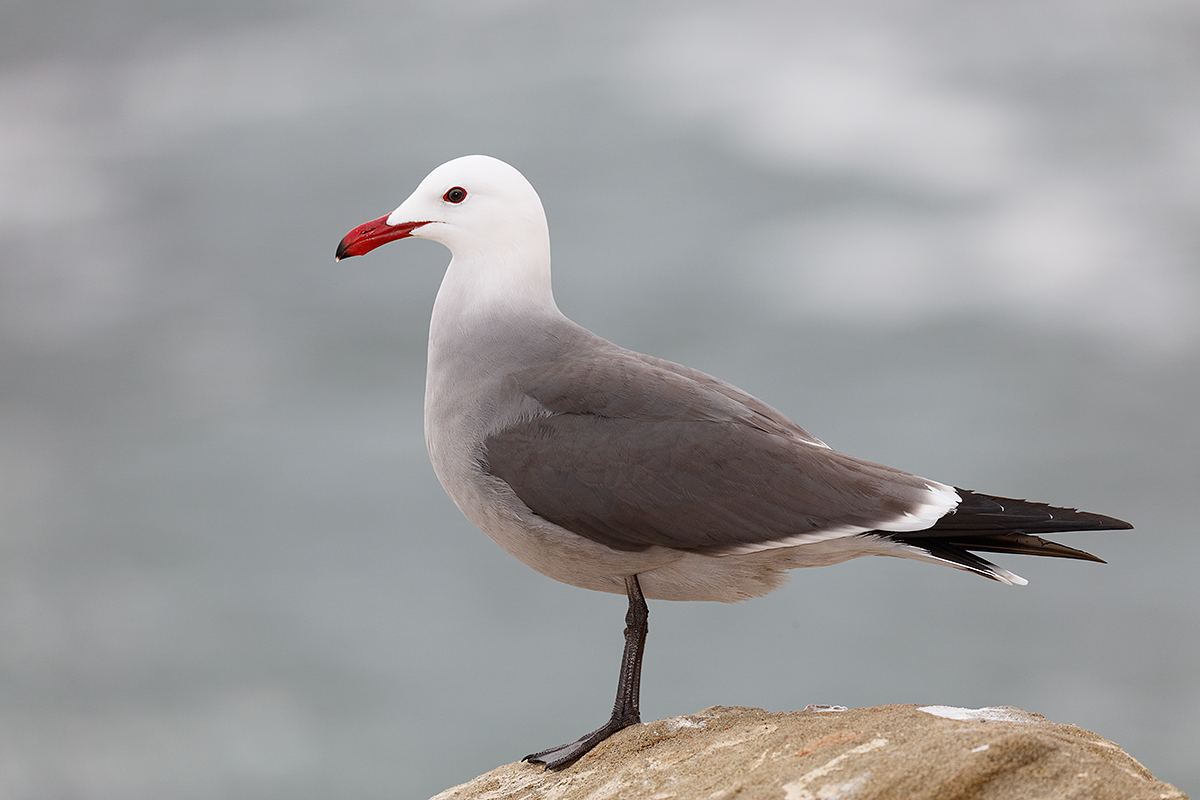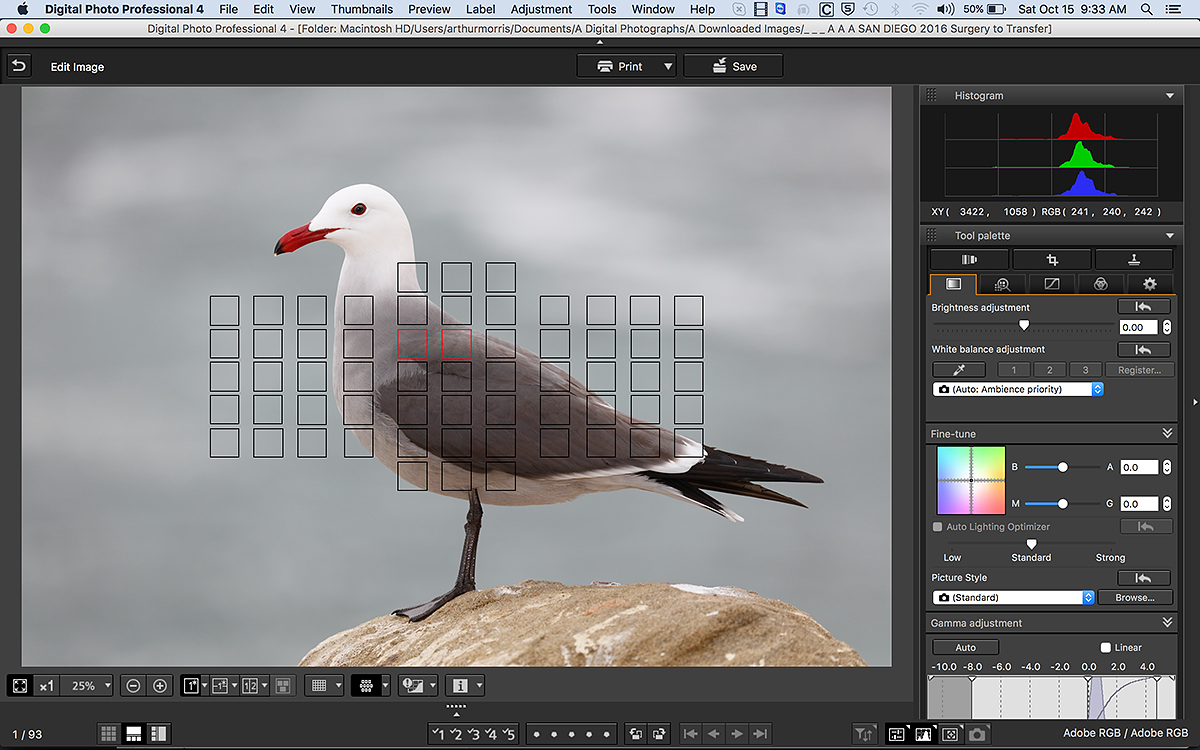What’s Up?
I am somewhere in South America. I hope that you are well. Jim and Jen are at the office most days to help you with your mail order needs and Instructional Photo-Tour sign-ups. I still need folks for San Diego, Japan, Galapagos, the Palouse, and the Bear Boat (Grizzly Cubs) trips. Among others 🙂 Please e-mail for couples and discount info for all of the above. Click here for complete IPT info.
I will have intermittent internet access for the rest of my South American adventure. I get back home late on December 25, 2016. Best and great picture making, artie
Gear Questions and Advice
Too many folks attending BAA IPTs and dozens of the folks whom I see in the field, and on BPN, are–out of ignorance–using the wrong gear, especially when it comes to tripods and more especially, tripod heads… Please know that I am always glad to answer your gear questions via e-mail.
The Streak: 394!
Today’s blog post marks a totally insane, irrational, illogical, preposterous, absurd, completely ridiculous, unfathomable, silly, incomprehensible, what’s wrong with this guy?, makes-no-sense, 394 days in a row with a new educational blog post. As always-–and folks have been doing a really great job recently–-please remember to use our B&H links for your major gear purchases. For best results use one of our many product-specific links; after clicking on one of those you can continue shopping with all subsequent purchases invisibly tracked to BAA. Your doing so is always greatly appreciated. Please remember: web orders only. And please remember also that if you are shopping for items that we carry in the new BAA Online Store (as noted in red at the close of this post below) we would appreciate your business.
|
This image was created at La Jolla, CA with the hand held Canon EF 100-400mm f/4.5-5.6L IS II USM lens (at 321mm) and the mega mega-pixel Canon EOS 5DS R. ISO 800. Evaluative metering +2/3 stop: 1/1250 sec. at f/6.3 in Manual mode. AWB. On-camera fill flash at -1 stop with the Canon Speedlite 600EX-RT. Large Zone Center AF/AI Servo/Rear Focus AF as framed was active at the moment of exposure (as is always best when hand holding). The two AF points activated by the system on the bird’s shoulder as shown in the DPP 4 screen capture below. Click here to see the latest version of the Rear Focus Tutorial. Click on the image to see a larger version. Image #1: Heerman’s Gull Posing A |
Subject to Imaging Sensor Orientation Question
Q1: The body of the bird in both images is:
a-perfectly parallel to the imaging sensor.
b-turned slightly away from parallel.
c-turned lightly toward this side of parallel.
Tip: do not be fooled by the two different head angles. The multiple choice question above has to do with the subject to imaging sensor plane orientation.
|
This image of the same bird was also created at La Jolla, CA with the hand held Canon EF 100-400mm f/4.5-5.6L IS II USM lens (this one at 330mm) and the mega mega-pixel Canon EOS 5DS R. ISO 800. Evaluative metering +2/3 stop: 1/1250 sec. at f/6.3 in Manual mode. AWB. On-camera fill flash at -1 stop with the Canon Speedlite 600EX-RT. Large Zone Center AF/AI Servo/Rear Focus AF as framed was active at the moment of exposure (as is always best when hand holding). In this one a single AF point that fell on the lower neck just above the bend of the wing. Click here to see the latest version of the Rear Focus Tutorial. Click on the image to see a larger version. Image #2: Heerman’s Gull Posing B |
Head Angle Questions
Q2: In Image #1 the bird’s head is:
a-turned about 2 degrees towards us.
b-perfectly parallel to the imaging sensor.
c-turned about 1 degree away from us.
Q3: In Image #2 the bird’s head is:
a-turned about 2 degrees towards us.
b-perfectly parallel to the imaging sensor.
c-turned about 1 degree away from us.
This is the DPP 4 Screen Capture for Image #1 |
The DPP 4 Screen Capture for Image #1
Another Lying Histogram
A quick glance at the DPP 4 RGB histogram above shows what seems to be a significantly underexposed image with no R, G, or B values more than 1/3 of the way into the right-most box of the histogram. But the RGB values themselves show that the brightest WHITEs are pretty much perfect at 241, 240, 242. I call histograms like this “Lying Histograms” because it is easy to wind up with WHITEs that are either totally blown out at 255, 255, 255 or with RGB values in the mid-250s where it is extremely difficult to tease any detail at all out of the white feathers.
Tip: don’t always rely on the histogram. If you want to push the exposure, lower the shutter speed until you see blinkies in the whites and then go to a 1/3 stop faster shutter speed.
The San Diego Site Guide
If you can’t make the IPT below, be sure to get yourself a copy of the San Diego Site Guide here. The Site Guides are the closest thing to joining an IPT that you can experience without actually joining one. And they cost only fifty bucks–a lot less than an IPT! I share everything that I know about the five killer photography spots within 20 minutes of downtown San Diego. Learn where and how and when to photograph the amazing California race of Brown Pelican; Marbled Godwits against bright buff backgrounds; Wood Ducks, Lesser Scaup, and Ring-necked Duck at point blank range; and a variety of stunning gulls (including Heerman’s, Western, and California) both perched and in flight. You will learn where to go on what wind and what tides are best for each coastal location. As usual, I have held nothing back. Both the Fort DeSoto and Bosque Site Guides have received nothing but praise from the more than 500 photographers who were able to visit these sites for the first time as if they had been photographing them for a decade. The San Diego Site Guide consists of 8936 words and 38 color photographs. It will prove most useful to folks visiting in the colder months, but many of the locations are productive in other seasons as well, especially spring. Note: The Brown Pelicans, which are the big attraction in San Diego, have their bright red bill pouches only in winter, so this guide–though useful at other times of year–is most valuable to those visiting at that season.
|
San Diego offers a wealth of very attractive natural history subjects. With annual visits spanning more than three decades I have lot of experience there…. |
2017 San Diego 4 1/2-DAY BIRDS AS ART Instructional Photo-Tour (IPT) JAN 11 thru and including the morning session on JAN 15: 4 1/2 days: $1999.
(Limit: 10/openings 6)
Meet and Greet at 7:00pm on the evening before the IPT begins; Tuesday 1/10/17.
Join me in San Diego to photograph the spectacular breeding plumage Brown Pelicans with their fire-engine red and olive green bill pouches; Brandt’s and Double-crested Cormorants; breeding plumage Wood and Ring-necked Duck; other duck species possible including Lesser Scaup, Redhead, and Surf Scoter; a variety of gulls including Western, California, and the gorgeous Heerman’s, all in full breeding plumage; shorebirds including Marbled Godwit, Willet, Sanderling and Black-bellied Plover; many others possible including Least, Western, and Spotted Sandpiper, Whimbrel, Black and Ruddy Turnstone, Semipalmated Plover, and Surfbird; Harbor Seals (depending on the current regulations) and California Sea Lions; and Bird of Paradise flowers. And as you can see by studying the two IPT cards there are some nice bird-scape and landscape opportunities as well.
With gorgeous subjects just sitting there waiting to have their pictures taken, photographing the pelicans on the cliffs is about as easy as nature photography gets. With the winds from the east almost every morning there is usually some excellent flight photography. And the pelicans are almost always doing something interesting: preening, scratching, bill pouch cleaning, or squabbling. And then there are those crazy head throws that are thought to be a form of intra-flock communication.
Did I mention that there are wealth of great birds and natural history subjects in San Diego in winter?
|
Though the pelicans will be the stars of the show on this IPT there will be many other handsome and captivating subjects in wonderful settings. |
The San Diego Details
This IPT will include five 3 1/2 hour morning photo sessions, four 2 1/2 hour afternoon photo sessions, four lunches, and after-lunch image review and Photoshop sessions. To ensure early starts, breakfasts will be your responsibility.
A $599 non-refundable deposit is required to hold your slot for this IPT. You can send a check (made out to “Arthur Morris) to us at BIRDS AS ART, PO Box 7245, Indian Lake Estates, FL, 33855. Or call Jim or Jennifer at the office with a credit card at 863-692-0906. Your balance, payable only by check, will be due on 9/11//2016. If we do not receive your check for the balance on or before the due date we will try to fill your spot from the waiting list. Please print, complete, and sign the form that is linked to here and shoot it to us along with your deposit check. If you register by phone, please print, complete and sign the form as noted above and either mail it to us or e-mail the scan. If you have any questions, please feel free to contact me via e-mail.
Please Remember to use my Affiliate Links and to Visit the New BAA Online Store 🙂
To show your appreciation for my continuing efforts here, we ask, as always, that you get in the habit of using my B&H affiliate links on the right side of the blog for all of your photo and electronics purchases. Please check the availability of all photographic accessories in the New BIRDS AS ART Online Store, especially the Mongoose M3.6 tripod head, Wimberley lens plates, Delkin flash cards and accessories, and LensCoat stuff.
As always, we sell only what I have used, have tested, and can depend on. We will not sell you junk. We know what you need to make creating great images easy and fun. And please remember that I am always glad to answer your gear questions via e-mail.
I would of course appreciate your using our B&H affiliate links for all of your major gear, video, and electronic purchases. For the photographic stuff mentioned in the paragraph above, and for everything else in the new store, we, meaning BAA, would of course greatly appreciate your business. Here is a huge thank you to the many who have been using our links on a regular basis and those who will be visiting the New BIRDS AS ART Online Store as well.
Be sure to like and follow BAA on Facebook by clicking on the logo link upper right. Tanks a stack!
Typos
In all blog posts and Bulletins, feel free to e-mail or to leave a comment regarding any typos or errors. Just be right 🙂



















Arthur you have more patience to a degree than me. Enjoy the rest of your trip.
Second picture has head parallel to sensor, as you can see light through the breathing holes in the beak. Bodies look parallel on both based on the legs, but not as precise.
1-B
2-A
3-C
Your tip to work around a lying histogram is going to be very helpful. THANKS
1/B
2/A
3/C
Subtle differences and angles tricky.
As far as I can see, the bird’s body is parallel to the sensor in both images. The head is turned slightly away in the first and slightly toward the camera in the second. I do prefer the second; remarkable how a tiny change in head angle makes a difference.
I got the first answer backwards, the penalty for trying to do this on the phone. It’s the first image I prefer and that has the head slightly toward the camera. I now think in the second the head is parallel to the sensor, not turned away.
ps I love Heermann’s gulls, just gorgeous birds, and I’m a fan of gulls in general. And I use the blinkies in general for birds with white in them because that works better for me. I’m still amazed by the number of photographers I meet who don’t know about blinkies.
Q1=a
Q2=a
Q3=b
1. B
2. A
3. C
1. A
2. B
3. C
Pretty pointless question.
One or two degrees is neither here nor there; from any point of view it makes damn all difference to anything.
On exposure, the only lying histogram is the one you put such faith in. It’s based on the in camera jpeg, is subject to a host of variables including white balance and is usually entirely inaccurate and misleading.
Blinkies just touching the right histogram wall are always easily recoverable in post as the apparent overexposure is just that, apparent and not real. There is at least another stop of leeway when you look at the real histogram in a proper raw file viewer.
Many thanks for sharing your thoughts. As far as “one or two degrees of head angle being neither here nor there” I am really glad that that works for you.
later and love, artie
They all look the same to me, have no idea how you differentiate between 1 or 2 degrees especially out in the field with a moving bird.